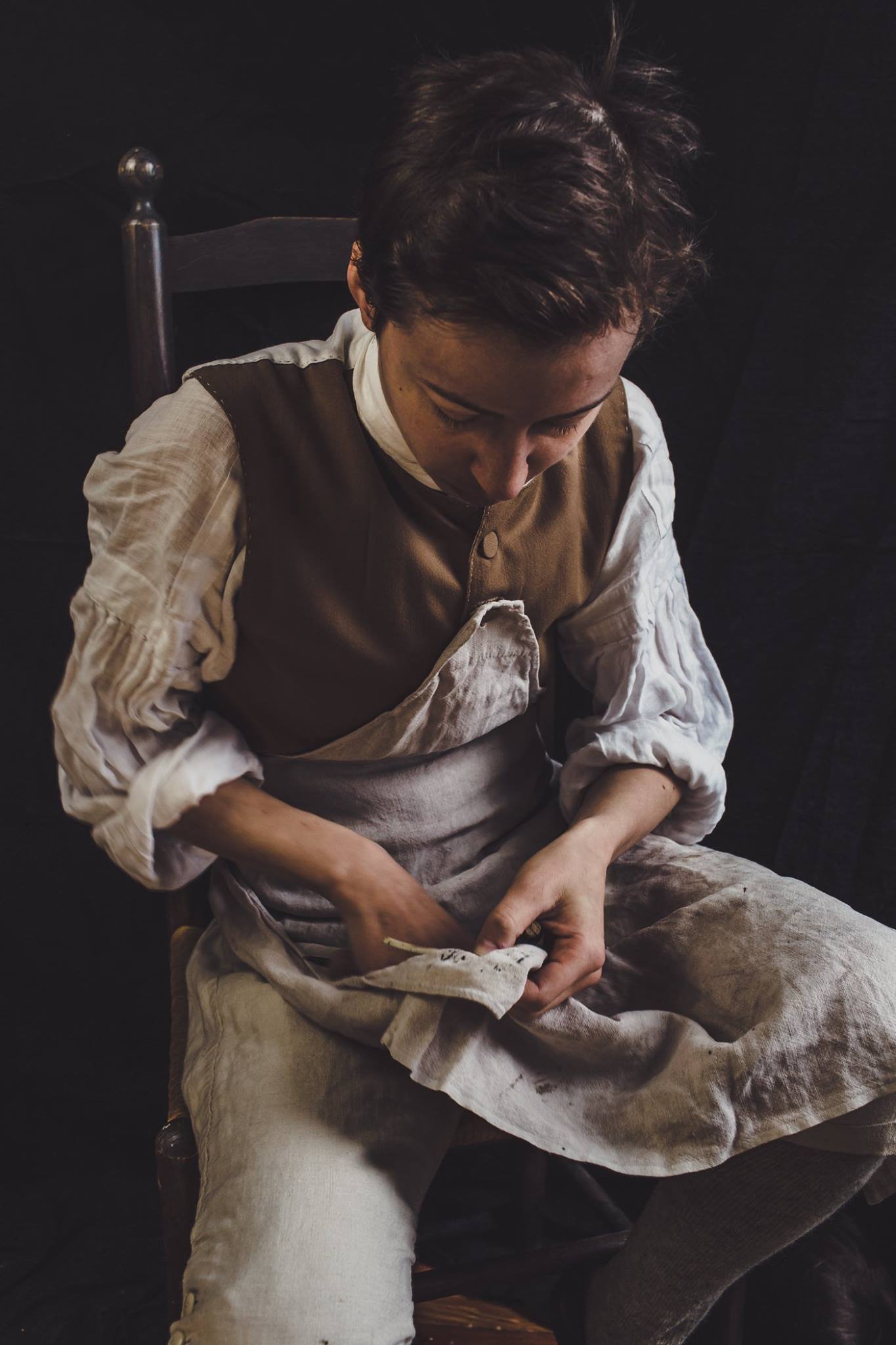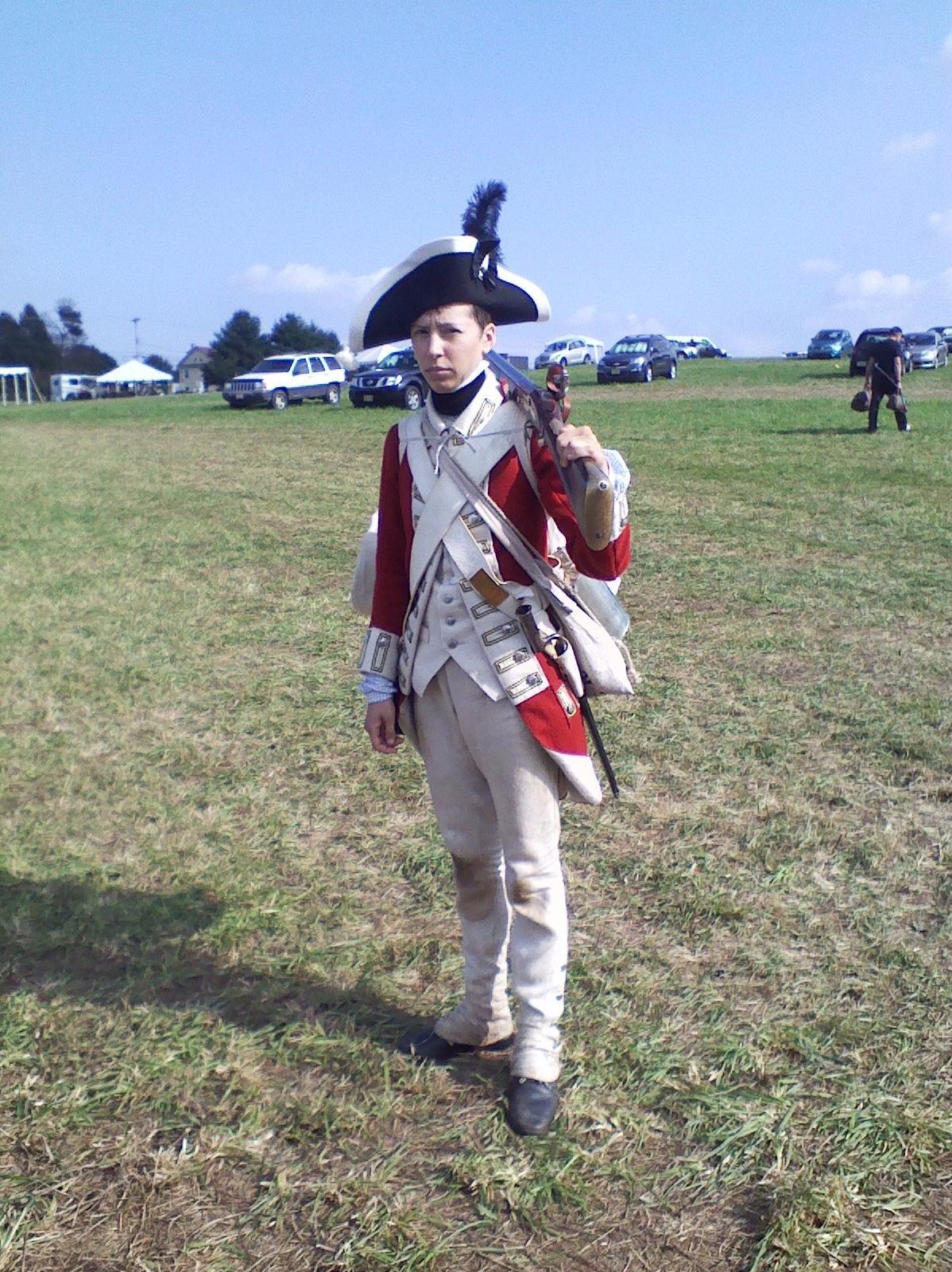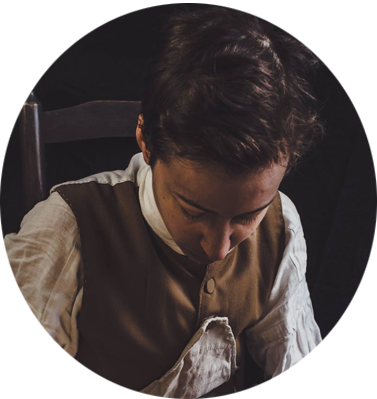Fitted With the Greatest Exactness: A new Recruit's Uniform
I've been reenacting for a decade, and for the past few years have portrayed an 18th century American writing master, clerk, or bookbinder, roles close to my modern job as a book conservation technician. But I'd never portrayed a soldier, and with my 20s winding down I decided that now was the time to join an army unit - plus, one man who enlisted in the 17th in the 1770s gave his occupation as a bookbinder.

For my first event I visited one of the unit's tailors to make a fatigue cap and gaitered trousers, and was able to borrow everything else. I was grateful for the loaner clothes and accouterments but I’m a small man by modern standards and they were too large. After being used to wearing civilian clothes tailored to my body I noticed the difference. My loaner clothes didn't sit right and the excess fabric made it harder to move, my gear slid around when I moved quickly, my hat was in danger of flying off when I ran. There was also a psychological element to wearing an ill-fitting uniform: I felt like I was playing dress-up instead of wearing practical clothes that made me look like I belonged. Cuthbertson mentions the importance of fit in making a soldier look smart in his 1776 "System for the Complete Interior Management and Oeconomy of a Battalion of Infantry":
"As the state in which the Cloathing is usually sent to a Regiment, requires many alterations, to make it perfect, and as nothing contributes more to the good appearance of Soldiers, than having the several appointments which compose their Dress, fitted with the greatest exactness, it is necessary that no pains be spared, to accomplish so advantageous a design"... [1]
Between my first and second event I visited the unit’s tailors to make my own clothes. They drafted a pattern for me and then showed me step by step how to make a coat, waistcoat, and hat. I also received a set of my own accouterments, which were sized for my height.
[gallery ids="3579,3578,3577,3580" columns="2" size="medium"]
I noticed the difference immediately at my second event: my clothes allowed a full range of easy motion, my gear stayed in place as I ran, knelt, and threw myself to the ground without needing to be readjusted, and I felt more like a soldier. Part of that was fit, and part of it was the uniform being less forgiving than my tradesman's clothing. The snug waistcoat with layers of interfacing and wool, coat with layers of broadcloth, interfacing, and lapels stiff with lace, a new neck-stock of stiff buckram, and tightly-laced gaitered trousers changed my posture, forcing my shoulders back, my belly in, and my neck up. The 1764 Manual Exercise describes the "Position of a Soldier under Arms" in much the same fashion - no slouching over my workbench in an apron like I'm used to:
"...the Belly drawn in a little, but without constraint; the Breast a little projected ; Shoulders square to the Front, and kept back..." [2]
The end result: a newly-minted recruit of the recreated 17th. Clothes don't make the man and I have a lot of learning to do, but they certainly helped me get into the right mindset.

Footnotes: [1] Cuthbertson, Bennett. Cuthbertson's System for the Complete Interior Management and Oeconomy of a Battalion of Infantry. Bristol: Rouths and Nelson for A. Gray, Taunton, 1776. Page 67. Accessed through Google Books, 8 October 2017. [2] The manual exercise, as ordered by His Majesty, in the year 1764. Philadelphia: Humphreys, Bell, and Aitken. 1776. Page 3. Accessed through Archives.org, 8 October 2017.

BEN BARTGISIn addition to being a new recruit to the 17th, Ben Bartgis is a book conservator technician at a very large institution and teaches on the material culture of literacy in the long 18th century.

